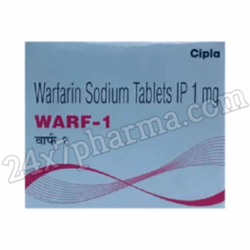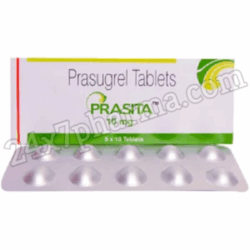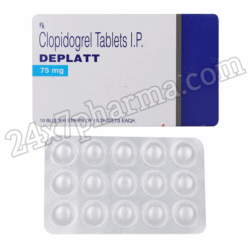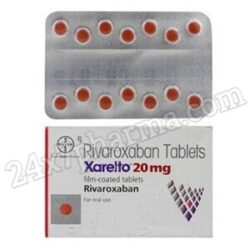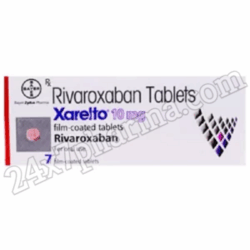Blood Clot
Showing all 10 resultsSorted by latest
PLAVIX 75mg Tablet 28’s
Original price was: $12.$10Current price is: $10.Loparin 40 mg Injection 0.4ml
Original price was: $17.$15Current price is: $15.Prasita 10 mg Tablet 10’s
Original price was: $15.$13Current price is: $13.DEPLATT 75mg Tablet 30’s
Original price was: $10.$8Current price is: $8.Xarelto 20mg Tablet 14’S
Original price was: $41.$34Current price is: $34.Xarelto 15mg Tablet 14’S
Original price was: $41.$34Current price is: $34.Xarelto 10mg Tablet 7’S
Original price was: $41.$34Current price is: $34.Xarelto 2.5mg Tablet 14’s
Original price was: $24.$20Current price is: $20.Eliquis 5mg Tablet 20’S
Original price was: $43.$36Current price is: $36.Red blood cells, fibrin, and platelets combine to create a solid or semisolid mass known as a blood clot. Both clots and arteries can develop. A clot that forms in an artery is known as an arterial clot, whereas a clot that originates in a vein is known as a venous clot. Both kinds of clots have the potential to seriously harm your health.
Types of Blood Clots
Vein clots and artery clots are the two primary categories of blood clots. The most prevalent kind of blood clot is a venous clot. They often affect the legs or thighs and are frequently brought on by extended periods of inactivity. Although less frequent, arterial clots are more dangerous because they can prevent blood from reaching crucial organs like the heart or brain. The arteries of the heart or brain are where arterial clots most frequently develop.
Causes and Risk Factors
Your chance of getting a blood clot might rise due to a variety of reasons. Age, smoking, obesity, cancer, pregnancy, specific drugs (such as birth control pills), and specific medical problems are a few of these variables (such as heart disease or stroke). It is crucial to discuss your risk of having a blood clot with your doctor if you have any of these risk factors.
How to Prevent Blood Clots
You may take a number of steps to lower your risk of blood clot development. Ask your doctor what you can do to lower your risk if you have one or more risk factors for forming a clot. Generally speaking, you can lower your risk by giving up smoking, keeping a healthy weight, engaging in regular exercise, and dressing comfortably. Additionally, to maintain your blood flowing normally if you are going to be motionless for a long time (like on a lengthy journey), get up and walk around every few hours.
Because they can result in major health issues, blood clots can be hazardous. Blood clots can occur for a variety of reasons, but there are a number of things you can do to lower your risk. Ask your doctor what you may do to lower your risk if you believe you may be at risk of having a blood clot.


